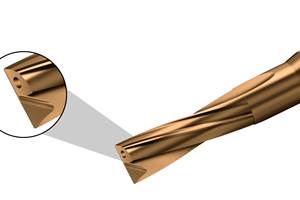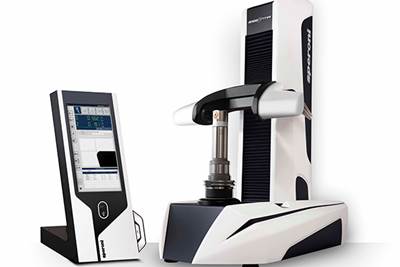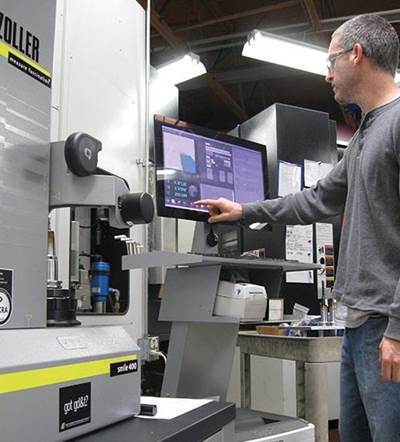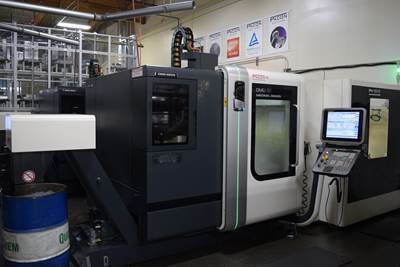Tool Presetting Identifies and Isolates Costly Problems
Speroni’s Futura CNC presetter enabled Cogitic to diagnose runout and wear problems with its tooling before running the tools on its machines, saving time and expensive material.
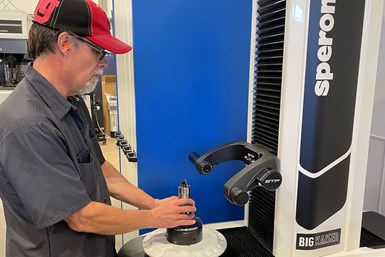
The Speroni Futura CNC presetter enables Cogitic to identify runout and tool wear before placing tools into its machines and potentially wasting time and expensive materials. Photo Credit: BIG KAISER
Tool presetters check and validate important features like tool runout, insert wear and tool assembly verification that on-machine measuring often cannot inspect on its own. Neglecting to confirm these features before loading tools into the magazine can mean that problems are only discovered partway through production, when gaging or visually inspecting first parts. Nevertheless, many shops believe that tool presetters are only financially feasible for large production facilities optimizing every moment of spindle uptime. Cogitic Corporation, a Coloradan engineering and manufacturing company, used to be one of these shops.
“For a long time, I didn’t think a tool presetter was right for our shop,” says Jared Veteto, Cogitic’s president. Cogitic produces complex components made from heat-resistant super alloys, and classifies its work as low-volume, high-mix. “Our setup times are somewhat long because of our varied product mix, so the incremental time savings added by premeasuring tools did not make it a high priority.”
Instead, operators at Cogitic would check tool dimensions in the machine to avoid human error caused by manually typing in tool lengths. The company valued the importance of maintaining consistency in this process by touching off tools at the same point in the operation and paying attention to machines’ thermal conditions.
“We plan to integrate the Speroni presetter with our ERP system as a next step,” Veteto says. “The software can communicate with the presetter and create a file of all the tool parameters ready to load directly into the machine control.”
This practice proved insufficient when Cogitic received an order for a high-value part requiring custom reamers for tight tolerance holes in 15-5 PH stainless steel. After the new tools for the job arrived, a Cogitic engineer inspected them using an open setup on a surface plate and found an unacceptable 0.014-inch runout.
The engineer then added collet chucks and checked the runout in the machine. The results again showed improper grinding of the tools and predicted poor hole-making performance. These tests took about a day, and convinced Veteto to invest in the Speroni Futura tool presetter from BIG KAISER.
Isolate Problems Early
When presetting tools, operators can identify whether the source of runout is the tool, holder or machine spindle. Runout decreases tool life and will compromise accuracy, so isolating and identifying problems early prevents scrapped parts, wasted time and unnecessary spending on replacement tools.
For shops like Cogitic, with short production runs and expensive raw material, tool presetting both saves setup time and improves quality control and tool life. In the event of unusual tool wear or problems with accuracy or surface finish, the tool presetter can identify or rule out problems too small to see with the naked eye. After all, the presetter is effectively a moving microscope at 45 times magnification, giving the operator a clear view of the cutting edge.
“It saves so much time trying to troubleshoot what problems a tool caused, and how to fix those problems,” Cratty says. “Cogitic has really expensive materials and can’t risk scrapping any of those parts.”
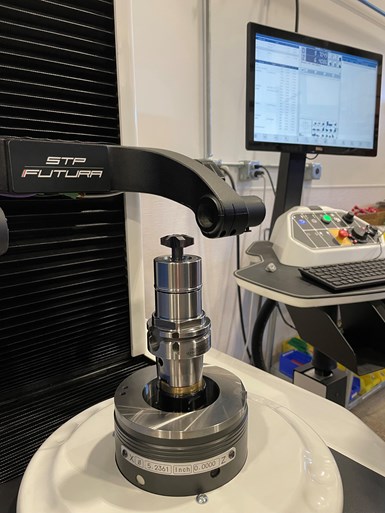
The Speroni Futura presetter can act as a moving microscope at 45 times magnification, exposing cutting edge wear invisible to the naked eye. Photo Credit: BIG KAISER
Measure the Tool, not the Feature
“In another case we were about to thread 40 holes on each of a dozen Inconel 625 parts,” Veteto says. “Before starting the job, we put the new multi-flute cutter in the presetter and discovered that one of the insert pockets had an odd taper that threw the insert way out. That tool was out-of-spec right out of the box.
“Before the presetter, we would often just cut the feature and then measure it,” Veteto continues. “We had no good way of checking the actual cutting tool. If it wasn’t right, we were dead in the water with a part in the machine and a long lead time on another custom tool. Now we can inspect tool assemblies long before the time when we’ll need to use them.”
Integrate and Automate
Beyond measurement and troubleshooting, presetters can serve as a first step toward automating time-consuming manual processes. The presetter supports pre-programming to automate the entire tool inspection procedure. Instead of guiding the camera by hand to check the different features, the cycle is saved, and the operator simply calls up the tool to execute the program. In this way, each tool can be quickly validated before loading into the machine.
“We plan to integrate the Speroni with our ERP system as a next step,” Veteto says. “The software can communicate with the Speroni and create a file of all the tool parameters ready to load directly into the machine control.”
This connectivity eliminates the potential for human error. There is no need to manually type the tool data into the control or to re-scan each of the tools unless a replacement is needed during the production run.
Related Content
Walter Launches New Solid Carbide Drill
The DC118 Supreme solid carbide drill provides high rigidity against deflection, superior centering accuracy and four margins with corner chamfers.
Read MoreThe Future of High Feed Milling in Modern Manufacturing
Achieve higher metal removal rates and enhanced predictability with ISCAR’s advanced high-feed milling tools — optimized for today’s competitive global market.
Read MoreTungaloy Drills, Milling Inserts Provide Enhanced Stability
Tungaloy has expanded its DrillForceMeister and TecMill lines with new drill bodies and milling inserts.
Read MoreForm Tapping Improves Tool Life, Costs
Moving from cut tapping to form tapping for a notable application cut tooling costs at Siemens Energy and increased tool life a hundredfold.
Read MoreRead Next
Why Do Top Shops Use Tool Presetters?
Looking at the data from Gardner Intelligence’s Top Shops survey, we can see patterns that show why high-performing shops tend to use tool presetters.
Read MorePresetting Becomes Prevalent
Next Intent implemented presetting and shrink-fit toolholding when it bought a five-axis machining center, but it has since seen these resources deliver value to machining centers throughout the shop.
Read MoreStandardization Leans the Way to High-Mix Automation
An increasingly digitalized, lean manufacturing process begins with a common selection of cutting tools and five-axis machining fixtures.
Read More

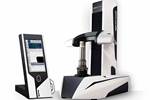
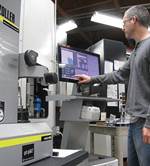
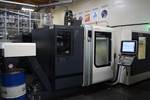







.jpg;maxWidth=300;quality=90)






